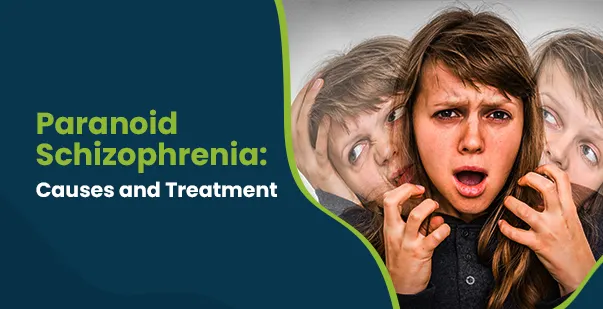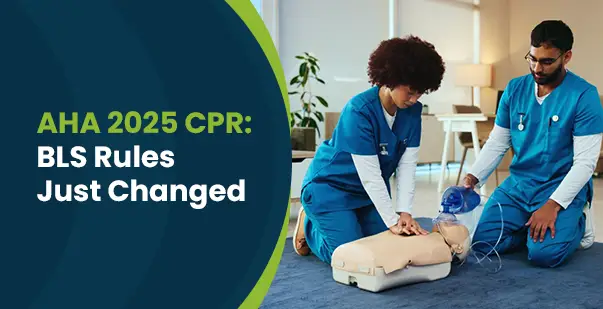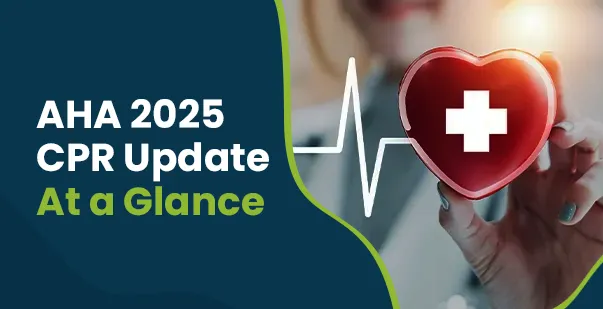Imagine feeling like someone is always watching you or hearing voices that do not exist. This is the reality for many individuals living with paranoid schizophrenia. The condition doesn’t just affect the individual diagnosed with it. Relationships, work, and everyday life are also affected due to this.
Schizophrenia is less common than conditions like depression and anxiety, but it still affects about 0.25% to 0.64% of the population. However, people who deal with this condition can lead fulfilling lives by knowing how to manage their symptoms. Let’s learn everything you need to know about paranoid schizophrenia.
What is Paranoid Schizophrenia?
Paranoid schizophrenia was a term once used to describe a type of schizophrenia where paranoia played a central role. Paranoia refers to intense feelings of suspicion, fear, or the belief that others are trying to harm you, even when there’s no evidence to support these thoughts. In this form of schizophrenia, paranoia is often linked to psychosis, which usually involves two key features, including delusions and hallucinations.
These experiences can make it hard for schizophrenic persons to trust others, feel safe, or engage in everyday activities. An example of paranoid schizophrenia is when someone might avoid family gatherings, thinking their relatives are plotting against them. Others might refuse help from coworkers because they believe they are being sabotaged.
Why Is Paranoid Schizophrenia No Longer A Diagnosis?
Paranoid schizophrenia is no longer a separate diagnosis because mental health experts have updated how schizophrenia is classified. In 2013, the American Psychiatric Association introduced the DSM-5 (Diagnostic and Statistical Manual of Mental Disorders, 5th Edition). Doctors use this guide to diagnose mental health conditions. It removed subtypes of schizophrenia, including paranoid schizophrenia, disorganized schizophrenia, and catatonic schizophrenia. Instead, all these subtypes are now grouped under the general term “schizophrenia.”
This change happened because research showed that dividing schizophrenia into subtypes wasn’t very helpful for treatment. Many people with schizophrenia didn’t fit neatly into just one subtype or had symptoms from more than one category.
For example, someone could have paranoia and disorganized thoughts at the same time, making the subtypes confusing. Although the term “paranoid schizophrenia” is no longer used officially, people who experience paranoia as a primary symptom are still diagnosed with schizophrenia. Schizophrenia is now considered a spectrum disorder, meaning symptoms can vary widely among individuals.
Difference Between Schizophrenia and Paranoid Schizophrenia
Schizophrenia and paranoid schizophrenia are both mental health conditions, but they are not the same. People often confuse the two because paranoia can be a common symptom of schizophrenia, making it seem like a separate condition. The differences between the two are:
| Aspect | Schizophrenia | Paranoid Schizophrenia |
| Definition | A mental health condition that affects thinking, emotions, and behavior. | A subtype of schizophrenia where paranoia is the main symptom. |
| Main symptoms | It include delusions, hallucinations, disorganized thinking, lack of motivation, and emotional flatness. | It is focused on delusions (false beliefs) and hallucinations (hearing or seeing things that aren’t real). |
| Paranoia | May or may not be present. | Paranoia is the central symptom, often causing extreme suspicion or fear. |
| Functionality Impact | It affects various aspects of life, including relationships and daily tasks. | Trust and safety are major challenges due to constant suspicion or fear. |
When Do You Say Someone Has Paranoid Schizophrenia?
The symptoms of paranoid schizophrenia can vary in severity and can disrupt daily life, relationships, and work. The types of symptoms experienced are:
- Delusions
People with delusions believe things that aren’t real. For example, they may think someone is spying on them or trying to harm them, even when there’s no evidence. These beliefs feel completely real to them.
- Hallucinations
Hallucinations involve sensing things that aren’t there, like hearing voices giving commands or warnings. For example, a person might hear someone calling their name when no one is around, or they may see objects others cannot see.
- Paranoia
Paranoia is intense fear or suspicion. Some may believe others are plotting against them or trying to cause harm, even without proof. For instance, they might think coworkers are conspiring to get them fired.
- Disorganized Thinking
This symptom makes it hard to think clearly or stay focused. Thoughts may jump from one topic to another, making speech difficult to follow. Conversations may be confusing, with unrelated ideas randomly mixed. For example, someone might say, “I need to buy groceries… the moon was so bright last night… do you think dogs can read?” The sudden shifts in topics make it difficult for others to understand the conversation.
- Emotional Flatness
Emotional flatness means showing little or no emotion. For example, someone might not laugh at a joke or react to sad news. Even in emotional situations, their facial expressions and tone of voice may stay the same.
- Social Withdrawal
People with paranoid schizophrenia often have social withdrawal symptoms. They may stop spending time with friends or family and prefer being alone. They might even skip social events or avoid conversations altogether. Isolation can increase feelings of paranoia, anxiety, and depression. Without social support, it becomes harder to manage symptoms, leading to further withdrawal and a cycle that deepens distress.
- Anxiety and Agitation
Anxiety or agitation can make someone feel restless or nervous. They might pace, fidget, or overreact to small problems. For example, they may get extremely upset over a minor disagreement or noise.
Now that we know the paranoid schizophrenia symptoms, let us see what causes it.
Read More: How do You Stop a Panic Attack?
What Causes Paranoid Schizophrenia?
The exact cause of paranoid schizophrenia is unknown, but research suggests that a combination of risk factors may contribute to its development. There isn’t a single cause; instead, various biological, environmental, and genetic factors are believed to play a role, which are discussed as follows:
1. Genetic Factors
Paranoid schizophrenia is significantly influenced by genetic factors, with heritability estimates ranging from 60% to 80%. While no single gene is solely responsible for the disorder, various genetic mutations can increase susceptibility. For instance, specific deletions like 22q11 and 3q29 can elevate the risk substantially, with individuals carrying these mutations having a much higher likelihood of developing schizophrenia.
2. Brain Chemicals
An imbalance in brain chemicals like dopamine and serotonin can affect how the brain processes information, leading to symptoms like delusions or hallucinations. These imbalances may disrupt communication between brain cells, worsening the disorder.
3. Low Oxygen Levels at Birth
Complications during birth, such as a lack of oxygen, can increase the risk of developing paranoid schizophrenia later in life. When the brain is deprived of oxygen, it can lead to long-term damage or affect how the brain develops. This may make the person more vulnerable to mental health conditions as they grow older.
4. Separation or Loss of a Parent at a Young Age
Traumatic experiences in childhood, such as losing a parent or being separated from them, can increase the risk of paranoid schizophrenia. These early losses can cause stress and affect the child’s emotional development.
5. Virus Exposure During Infancy or Before Birth
Exposure to certain viruses before or shortly after birth may impact brain development and increase the likelihood of developing paranoid schizophrenia. Viral infections can cause inflammation or disrupt the delicate processes that shape the brain in early life.
Read More: Anxiety in Children: What It Looks Like, Causes, and How to Help
How Do Professionals Diagnose Schizophrenia?
A mental health professional will evaluate the person’s symptoms, medical history, and behavior to diagnose schizophrenia. As no single test can confirm the condition, mental health professionals rely on a combination of interviews, observations, and medical tests to make an accurate diagnosis.
Patient Interview
One of the first steps in diagnosing schizophrenia is a detailed interview of the patient. During this process, the doctor asks the individual about their thoughts, emotions, and experiences. The doctor may also ask questions like:
- “Have you been hearing voices or seeing things others don’t?”
- “Do you feel that people are watching or trying to harm you?”
Observation
Another part of the diagnosis involves observing the person’s behavior and reactions. The mental health professional carefully notes how the person speaks, responds, and interacts during the interview.
Observations also help the doctor spot patterns, like sudden mood changes or unusual gestures, that might not be immediately noticeable to the person experiencing them. Doctors may also ask for other tests to rule out similar medical conditions.
What Tests Will Be Done To Diagnose Paranoid Schizophrenia?
Schizophrenia can be challenging to diagnose because its symptoms can be similar to other medical or mental health conditions. While no single test can directly confirm schizophrenia, doctors use various tests to rule out other possible causes of the symptoms. The paranoid schizophrenia tests include:
- Physical Tests to Rule Out Other Conditions
To ensure an accurate diagnosis, doctors often conduct physical exams and medical tests to rule out other conditions that could cause symptoms similar to schizophrenia. For example, brain injuries, such as trauma or tumors, can lead to confusion, hallucinations, or changes in behavior. Similarly, the effects of certain drugs or substances can mimic psychotic symptoms.
- Imaging Tests
Imaging tests like CT scans (Computerized Tomography) and MRI scans (Magnetic Resonance Imaging) provide detailed pictures of the brain. These images help doctors check for structural abnormalities, such as brain tumors, injuries, or signs of stroke. They can help eliminate other possible causes of symptoms like delusions, hallucinations, or confusion.
- Blood, Urine, and Cerebrospinal Fluid Tests
Laboratory tests analyze samples of blood, urine, or cerebrospinal fluid (collected through a spinal tap). These tests can detect problems such as:
- Chemical imbalances that might mimic schizophrenia.
- Infections that could affect brain function.
- Heavy metal poisoning from substances like lead or mercury.
These tests rule out conditions that can cause symptoms similar to schizophrenia, such as toxic exposures or infections like meningitis.
- Brain Activity Testing
An Electroencephalogram (EEG) measures and records electrical activity in the brain. This test can help identify neurological conditions like seizures or epilepsy, which can cause symptoms such as confusion, hallucinations, or sudden mood changes.
How Can We Treat Paranoid Schizophrenia?
Treating paranoid schizophrenia involves a combination of medications and therapy to manage symptoms and improve daily functioning. These treatments control delusions, hallucinations, and mood swings so that patients lead more balanced and fulfilling lives.
- Medications
Medications are often the first step in treating paranoid schizophrenia. They help control symptoms by balancing chemicals in the brain. Some of the medications given for managing paranoid schizophrenia symptoms are as follows:
- Antipsychotics
Antipsychotics are the main treatment for reducing delusions and hallucinations. Antipsychotic medications work by adjusting brain chemicals like dopamine, which are often out of balance in schizophrenia. They are usually taken daily as a pill or injection.
- Mood Stabilizers
Mood stabilizers manage extreme mood swings that some individuals with paranoid schizophrenia experience. They ensure emotions remain balanced so that no episodes of intense highs or lows can disrupt daily life.
- Anti-anxiety Medicines
Anti-anxiety medicines control feelings of intense worry or agitation. They are useful in calming restlessness and reducing anxiety, which often accompany paranoid thoughts in individuals with schizophrenia.
- Psychotherapy
Psychotherapy is essential for managing paranoid schizophrenia. It helps individuals understand their condition, build healthier thought patterns, and develop coping strategies. Through therapy, patients gain emotional support, improve relationships, and enhance their ability to handle daily challenges.
- Cognitive Behavioral Therapy (CBT)
CBT is one of the most effective forms of psychotherapy for paranoid schizophrenia. It teaches individuals how to challenge negative thoughts and behaviors and replace them with more positive patterns. For example, someone might learn to question paranoid beliefs and find logical explanations for their fears.
- Electroconvulsive Therapy (ECT)
ECT is used in severe cases when other treatments are ineffective. It involves controlled electrical stimulation of the brain to help relieve symptoms, especially when medications are not effective.
- Lifestyle Changes
In addition to medication and therapy, lifestyle adjustments can significantly improve well-being. Managing stress, following a consistent sleep routine, eating a balanced diet, and maintaining social connections can all support recovery and stability.
Manage Paranoid Schizophrenia With Confidence!
Paranoid schizophrenia is a challenging condition, but mental health professionals or psychiatrists can help you better in dealing with the condition. People living with paranoid schizophrenia can manage the condition by availing the correct treatment. If you understand the condition better, then you can create a more supportive environment for those affected. Moreover, once you get support from family, friends, and healthcare professionals, your recovery journey becomes smoother.
In moments of mental health crises, having first aid knowledge can save lives. Take a reputed first aid course today to prepare yourself and assist in any emergency, whether it’s mental health-related or physical.
FAQs
- What are paranoid schizophrenia symptoms?
Paranoid schizophrenia causes delusions, where a person believes false ideas like being watched or targeted. They may hear voices that aren’t real, feel suspicious of others, or experience fear. Emotional responses may seem inappropriate, and thinking might feel disorganized or disconnected.
- What is the behavior of a paranoid schizophrenic?
A paranoid schizophrenic may act guarded, avoid social contact, or mistrust others. They might talk to themselves, argue with voices they hear, or react strongly to imagined threats. Their behavior often revolves around their delusions, making daily tasks and relationships hard to manage.
- What is it like to live with paranoid schizophrenia?
Living with paranoid schizophrenia is challenging. It feels like reality is distorted, making trust and safety difficult. Support from loved ones, therapy, and medication can help. Everyday interactions may feel overwhelming or confusing. Hence, one needs to be patient and understanding.
- What age does schizophrenia start?
Schizophrenia usually starts between ages 16 and 30. Men often show symptoms in their late teens or early 20s, while women might develop it later, in their 20s or early 30s. Early warning signs include changes in mood, thinking, or behavior.









